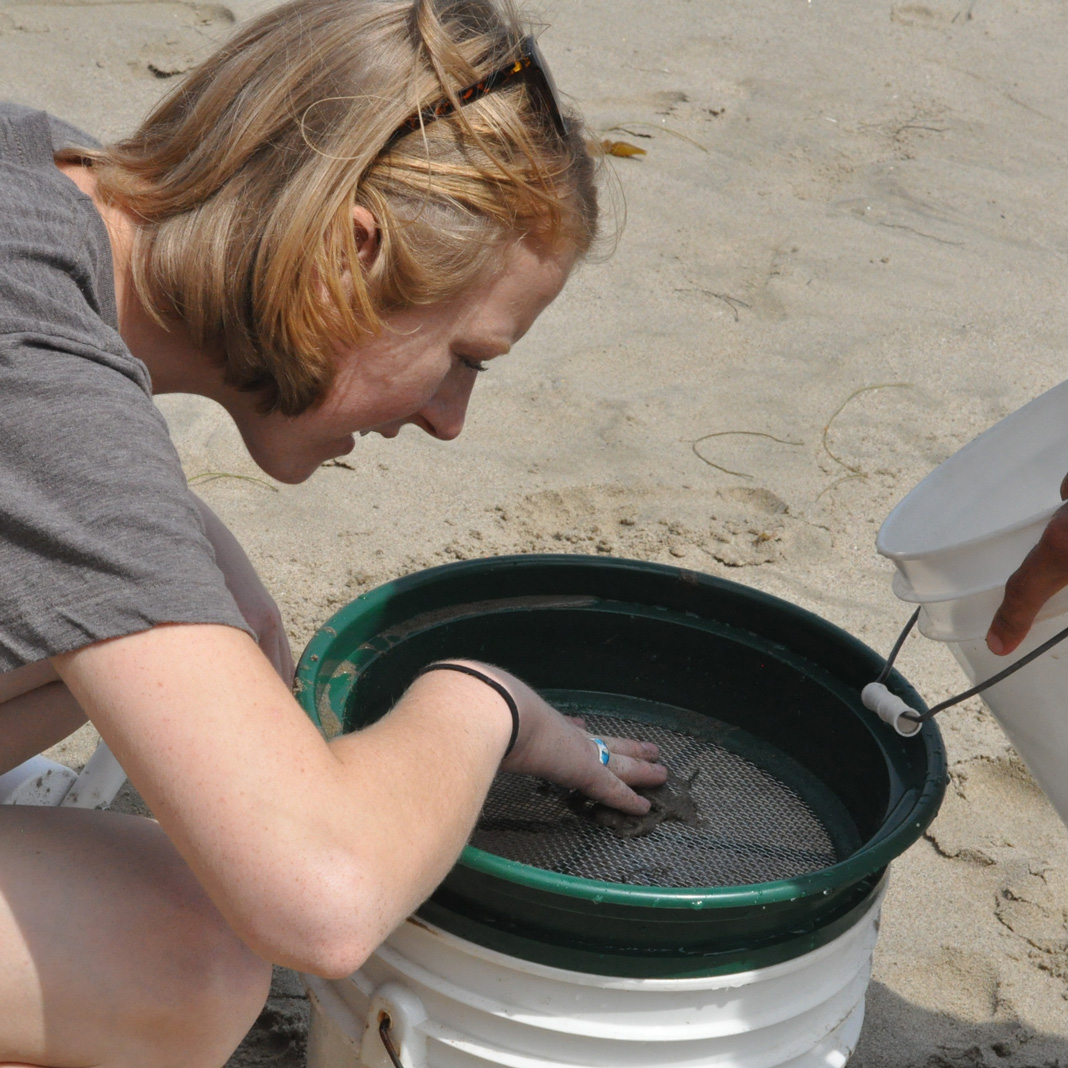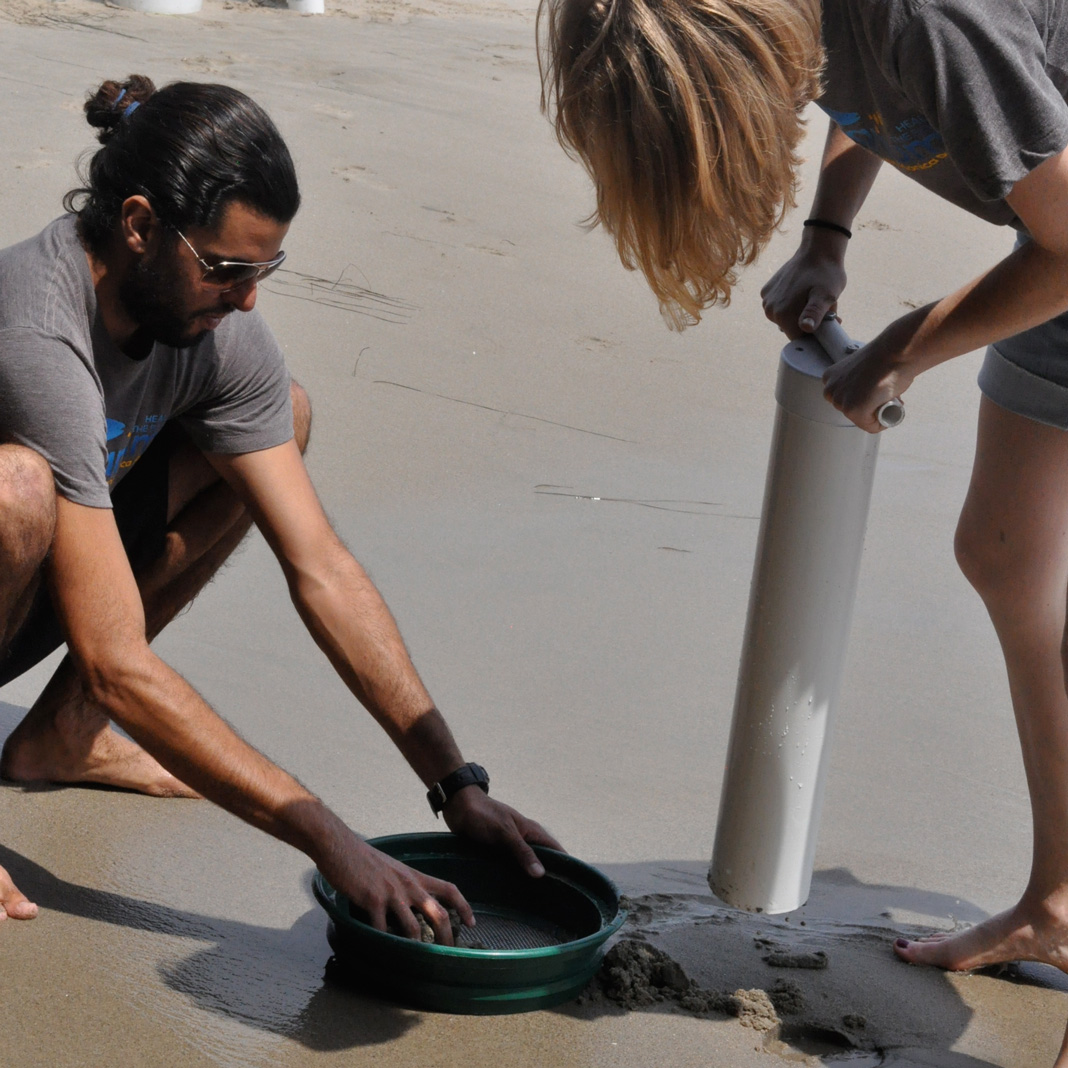Imagine what the rush of a wave looks like from underneath. The powerful pressure culminating, viciously spinning around you, and vanishing before the very eye.
Chris DeLorenzo, LA and NY based photographer, captures the essence of a breaking wave in his current exhibit “Breath of Disruption” at Gallery 169 in Santa Monica. His collection of moving, abstract photographs were taken just off the coast of Southern California.
“Many artists approach Gallery 169 to show their work, and many photographers have brought beach and water scenes,” says Frank Langen, Owner of Gallery 169. “It is difficult to find something new … a fresh perspective. When I met with Chris I was immediately intrigued by his statement coming from a sincere, unique connection to the ocean. From this sacred relationship he fosters with the ocean, its currents and waves, his eye provides a sensational, humbling, and original vision.”
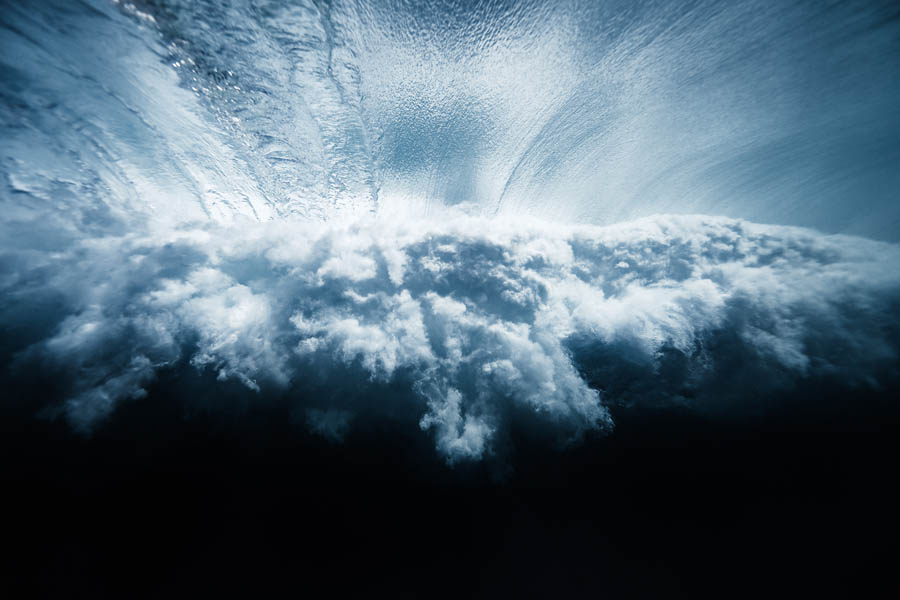
“Genesis” by Chris DeLorenzo
Ocean photography serves many purposes, from scientific documentation to education to cultural symbolism. Photos and videos deepen our understanding of the complexities of marine life, and also help us reflect on our connection with water.
“I have spent my entire life in, on, and under our beloved Pacific. Living and working along the edge of the continent has been my good fortune,” says Brian Murphy, an architect and surfer who helped discover Chris DeLorenzo. “There is something unique in this young man’s connection to the ‘wet side.’ His work manages to capture something that few artists convey in their work. Special, magical, uplifting … are but a few words that come to mind.”
We recently sat down with Chris for an interview and chatted about how he got started with ocean photography, his favorite ocean in the world, and his go-to green traveling tips.
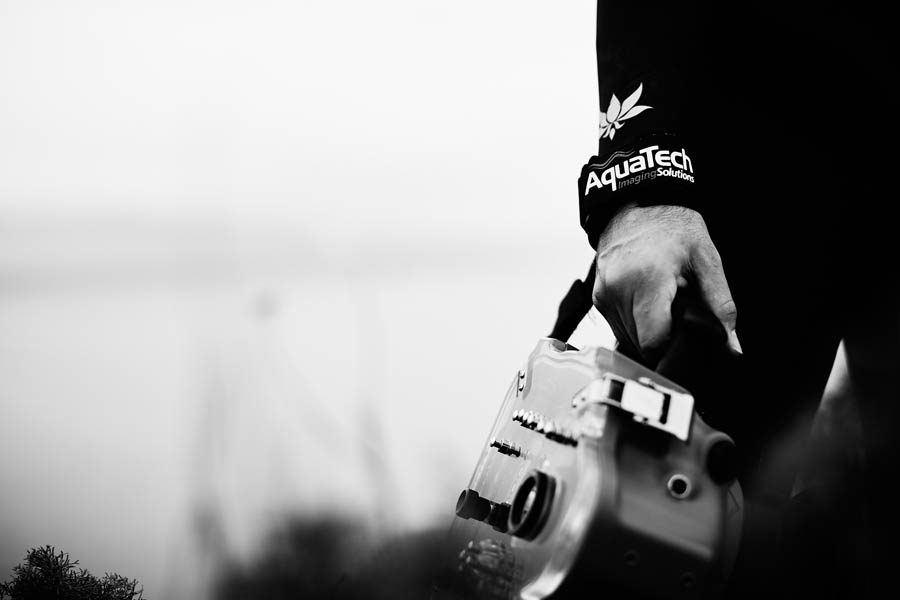
How did you get started with ocean photography?
Chris DeLorenzo: It’s kind of funny because I’m not a surfer or diver, but the ocean always had a huge place in my life. I didn’t even grow up near the ocean. It’s so crazy though, because I swear my first memory is from the beach in Florida. I must have been three years old … for some reason the ocean has always stayed with me.
I went to college for a semester and then dropped out and started working. Photography is not easily taught, and I’m not the best person to be told what to shoot in an academic setting. School is great, but it just wasn’t my path at the time. I did take some awesome classes, like entrepreneurship at Santa Monica College.
I spent a year and a half in Cali before I started landing professional work. Los Angeles is a photographer’s dream location; it has the city, sea, snow, and desert all so close by. I was able to build my professional portfolio in California in under two years. It’s a great place to launch a career.
As I was getting started, a few mentors helped me gain a strong base. I interned with Steven Lippman, renowned commercial photographer and former competitive surfer, for a year and put to use all this knowledge about how to work with clients and promote myself.
At first I thought I wanted to be a surf photographer. I do surf, but wouldn’t necessarily call myself a surfer — it’s the community I love. When I was swimming in L.A. one time about two years ago, I saw this incredibly clear water. I was maybe 50-100 feet out, very close to the shoreline. From then on I started to look for clear water. It was trial and error. And I really started to think about this: why is the water clearer on some days and in some locations than others?
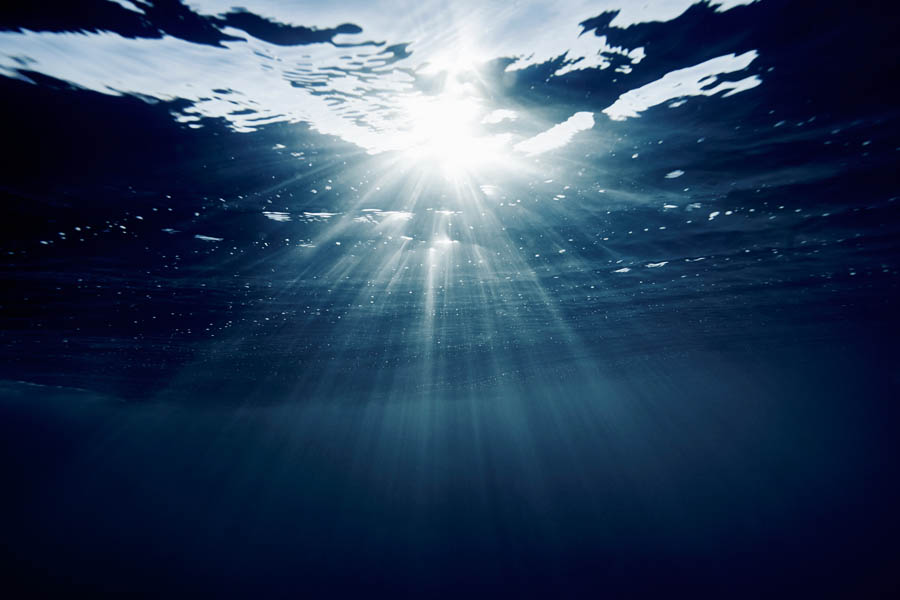
“Venus” by Chris DeLorenzo
I began to discover that water’s clarity has to do with quite a few factors, including pollution and ocean sediment. Location matters too, like whether there are cliffs nearby. Most of the time the farther out you go, the clearer the water is. But after a certain point the waves stop breaking, so you have to stay relatively close.
From then on, whenever we go surf I always ask whether the water was clear. People will laugh. Whatever … these narrow windows of clear water … I am drawn to them.
For the “Breath of Disruption” series, I photographed some 50,000 images of waves in Southern California over the course of 40 days. 9/10 days the water isn’t clear enough to shoot in.
What does “Breath of Disruption” mean?
Chris: It’s me in the space with the ocean on the edge of violent storm clouds. It’s a quick breath, the ocean lets you see it, and then it’s gone.
It’s my favorite thing in the world, being under the water and looking at waves going over my head. No one sees what I see. I feel like other people need to witness this amazing world … the air, water, sand, and the ocean floor … it’s a serene space that we think we know; a sacred paradise juxtaposed with sudden, fierce forces.

“Aquatic Cumulus” by Chris DeLorenzo
Everyone says, “Let’s go to the ocean and relax on the beach.” But this series is not that tranquil, peaceful vibe. It’s moody, intense, and electric. Beneath the surface, the waves look like arteries and veins with severe momentum. There are deep tints as the water swells, big vast concepts of time, space, light, and energy.
It’s surreal and humbling to use the reality of waves to create thoughtful, self-interpretive abstractions.
Photography is so relatable because it’s actually real life and energy; by its very nature it’s not abstract. But there is a fine balance when you’re creating impactful work in an oversaturated market. I want to do something different in my personal work, and connect with a deeper purpose.
It’s very easy to take a photograph that means nothing. It’s very powerful when you get it right, especially as the internet, computers, and cell phones make it possible for tens of thousands of people to see your work.

Do you have any professional advice about how to safely take photographs in the ocean?
Chris: Don’t get hit by the waves. And … you only have one shot. [Chuckles]
Physicality is key. You have to be pretty agile, and quickly get your body in the right position to take the shot at the right angle; it’s a very physical approach to photography. The tricky part is staying under. I can only hold my breath for about a minute, but when swimming intensely underwater, I last even less time.
My ocean photography gear includes a wet suit, fins, mask, and an underwater case for the camera. The camera is strapped to me, but it floats as well. Saltwater destroys equipment, so you have to clean and soak it all after every swim.
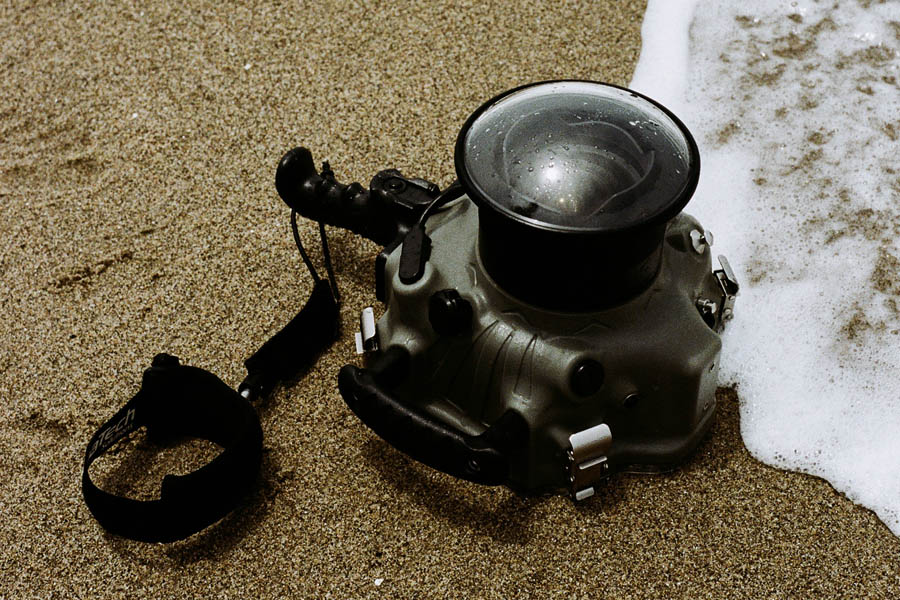
Where is your favorite ocean in world?
Chris: Indian Ocean, Maldives – it’s the ocean as it should be. Perfect water, 85 degrees. You can find your own spot. Door to door from L.A. to Maldives is 30 hours … it’s totally worth it.
What are your go-to tips for staying green while traveling?
Chris: I carry a big 64 ounce reusable water bottle around, which I think is made for beer, but works just fine for water.
I’m obviously against pollution in water. If I am out by the ocean and I see trash I’ll throw it away right there on the spot. We really have to be aware of our actions.
I think people just have to understand that everything comes full circle. What you do has an impact. There’s the whole “I’m just one person” thing, but if everyone doesn’t think like that, we are going in the right direction. For instance, in New York, they used to plow the streets and dump the snow in the water, but they stopped it, which is great. But there are so many other actions happening that have to stop to make our oceans cleaner. Fortunately, people are more aware than ever before.
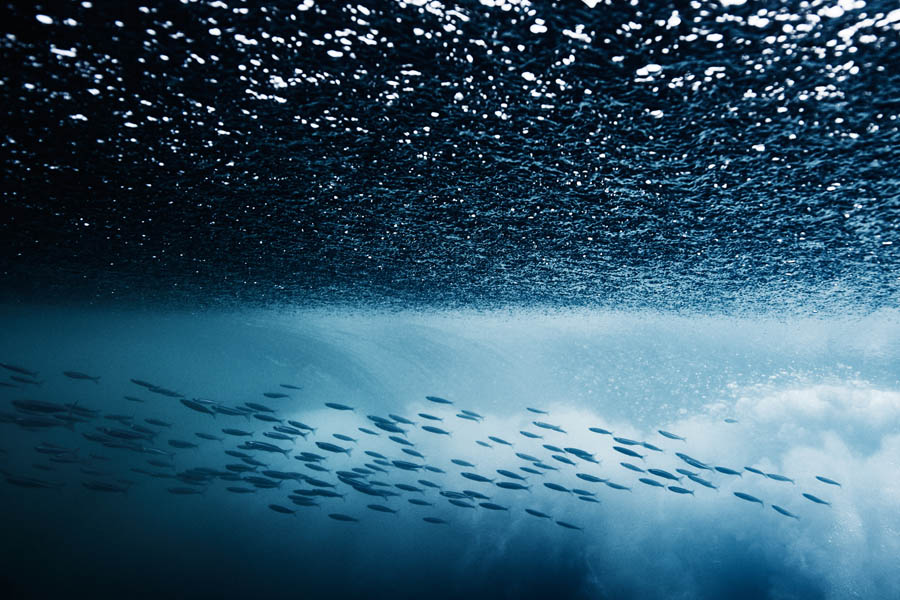
“Layers of Life” by Chris DeLorenzo
Come to our Featured Earth Month Event:
“Breath of Disruption” Exhibit by Chris DeLorenzo at Gallery 169
 Gallery 169, the “hub + cultural generator” of Santa Monica Canyon, is hosting an exhibit “Breath of Disruption” by LA/NY based photographer Chris DeLorenzo. The collection features beautiful, abstract photos taken under waves along the Southern California coast. Gallery entry is free. Best of all, 10% of proceeds from artwork sales in April support Heal the Bay.
Gallery 169, the “hub + cultural generator” of Santa Monica Canyon, is hosting an exhibit “Breath of Disruption” by LA/NY based photographer Chris DeLorenzo. The collection features beautiful, abstract photos taken under waves along the Southern California coast. Gallery entry is free. Best of all, 10% of proceeds from artwork sales in April support Heal the Bay.
When: April 8, 5-8pm (Artist meet and greet with Chris DeLorenzo from 5-5:30pm)
Where: 169 W Channel Rd, Santa Monica, CA 90402
See More
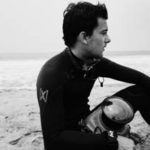 Chris DeLorenzo is a 22-year old photographer based in Los Angeles and New York. When he’s not capturing waves underwater he works with top agencies and brands on advertising and editorial content. See his “Breath of Disruption” collection prints and follow him on Instagram.
Chris DeLorenzo is a 22-year old photographer based in Los Angeles and New York. When he’s not capturing waves underwater he works with top agencies and brands on advertising and editorial content. See his “Breath of Disruption” collection prints and follow him on Instagram.
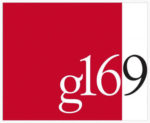 Gallery 169 is the “hub+cultural generator” of Santa Monica Canyon exhibiting established and emerging artists drawing from a rich reservoir of residents. Gallery 169 is located at 169 W Channel Road in Santa Monica, CA 90402. View current exhibits at their site and see more art at Instagram.
Gallery 169 is the “hub+cultural generator” of Santa Monica Canyon exhibiting established and emerging artists drawing from a rich reservoir of residents. Gallery 169 is located at 169 W Channel Road in Santa Monica, CA 90402. View current exhibits at their site and see more art at Instagram.





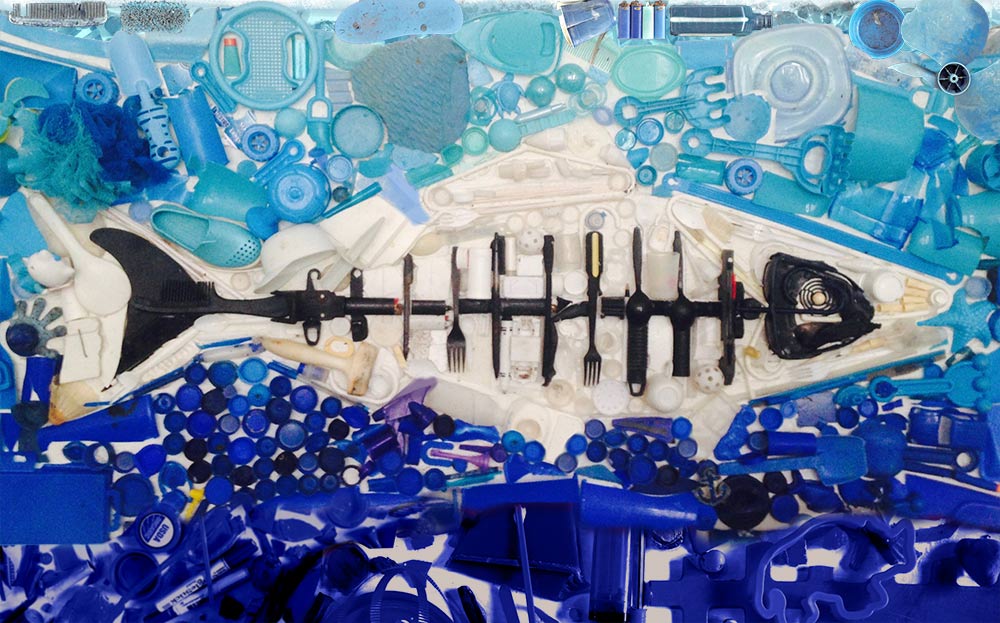
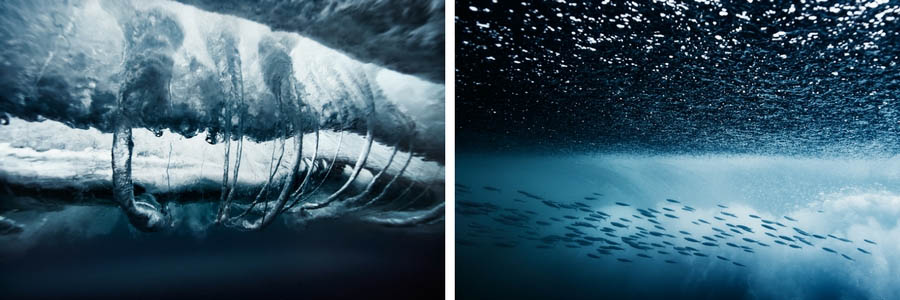









 Gallery 169
Gallery 169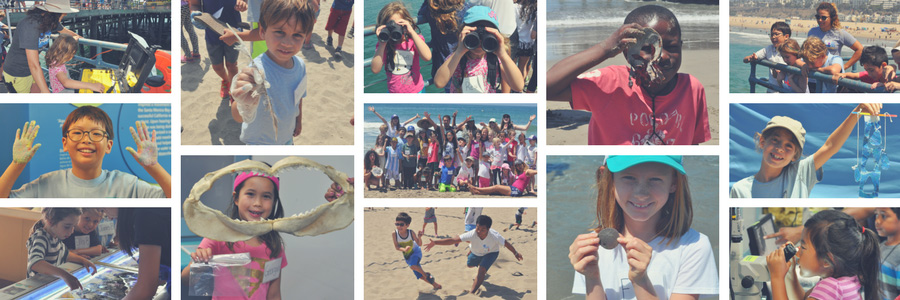
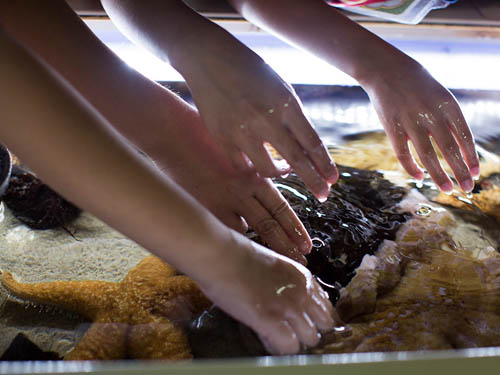
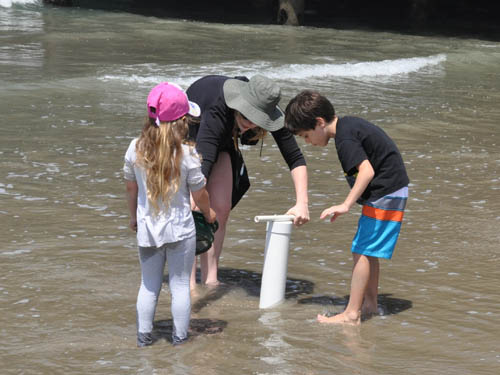
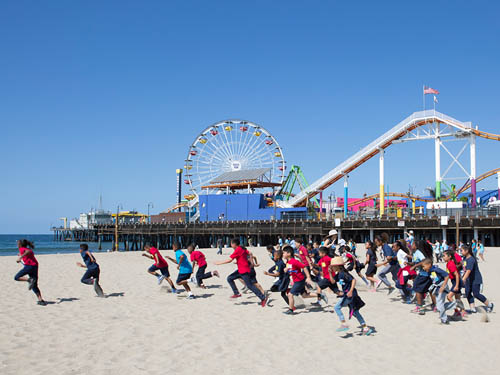
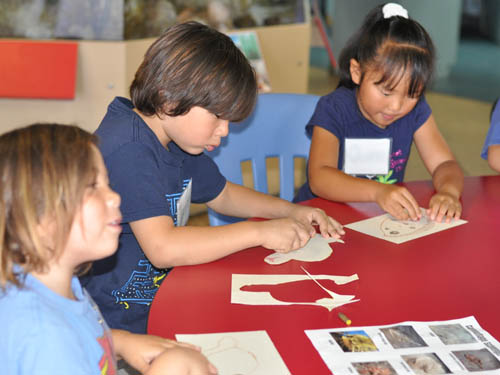

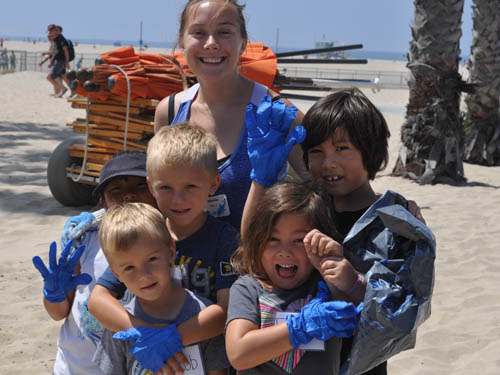
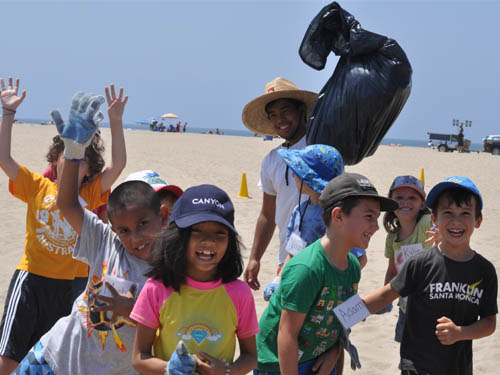

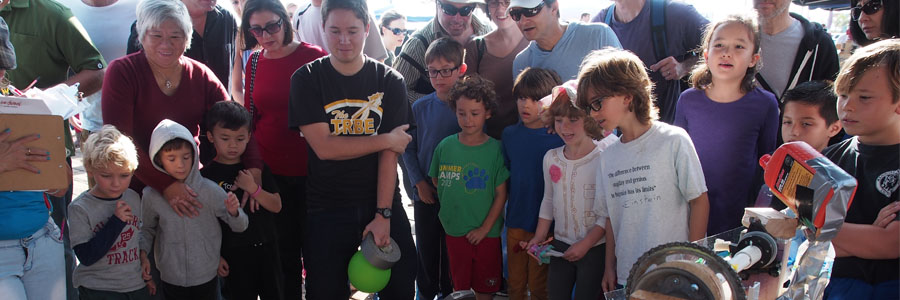
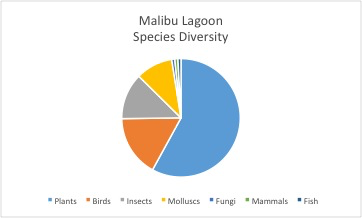 Most of our observations were of the amazing plants that rely on the wetlands to thrive. Plants form this environment’s base, providing a natural filter for water as it passes through. They also provide habitat, food, and shelter for the populations of birds, insects, and reptiles that live in wetlands. We found both sites were host to dozens of bird species including great blue herons, snowy egrets, and brown pelicans. Every year, almost one billion birds migrate along the coast of California in an area known as the Pacific coast flyway. Wetlands in Southern California are a crucial pit stop for migratory birds and the diversity of species we observed is promising. In just three hours at Ballona, we saw 17 different species of birds – almost a third of the bird species found in an extensive wetlands survey conducted by The Bay Foundation that spanned months. This shows the power of BioBlitzes to capture important data for conservation.
Most of our observations were of the amazing plants that rely on the wetlands to thrive. Plants form this environment’s base, providing a natural filter for water as it passes through. They also provide habitat, food, and shelter for the populations of birds, insects, and reptiles that live in wetlands. We found both sites were host to dozens of bird species including great blue herons, snowy egrets, and brown pelicans. Every year, almost one billion birds migrate along the coast of California in an area known as the Pacific coast flyway. Wetlands in Southern California are a crucial pit stop for migratory birds and the diversity of species we observed is promising. In just three hours at Ballona, we saw 17 different species of birds – almost a third of the bird species found in an extensive wetlands survey conducted by The Bay Foundation that spanned months. This shows the power of BioBlitzes to capture important data for conservation. From 2012 to 2013, Heal the Bay advocated for an ecological restoration of Malibu Lagoon which involved removing invasive species, replanting native ones, and adjusting the hydrology of the wetland. Inventories done by The Bay Foundation showed only six species of native plants prior to restoration, while almost 41 were noted after the restoration! Since plants form the base of an intricate web of life in the wetlands, bringing back natives can also bring back other species – including those that are threatened. At both sites our BioBlitzers found four threatened species, but that number will certainly increase with more sampling.
From 2012 to 2013, Heal the Bay advocated for an ecological restoration of Malibu Lagoon which involved removing invasive species, replanting native ones, and adjusting the hydrology of the wetland. Inventories done by The Bay Foundation showed only six species of native plants prior to restoration, while almost 41 were noted after the restoration! Since plants form the base of an intricate web of life in the wetlands, bringing back natives can also bring back other species – including those that are threatened. At both sites our BioBlitzers found four threatened species, but that number will certainly increase with more sampling.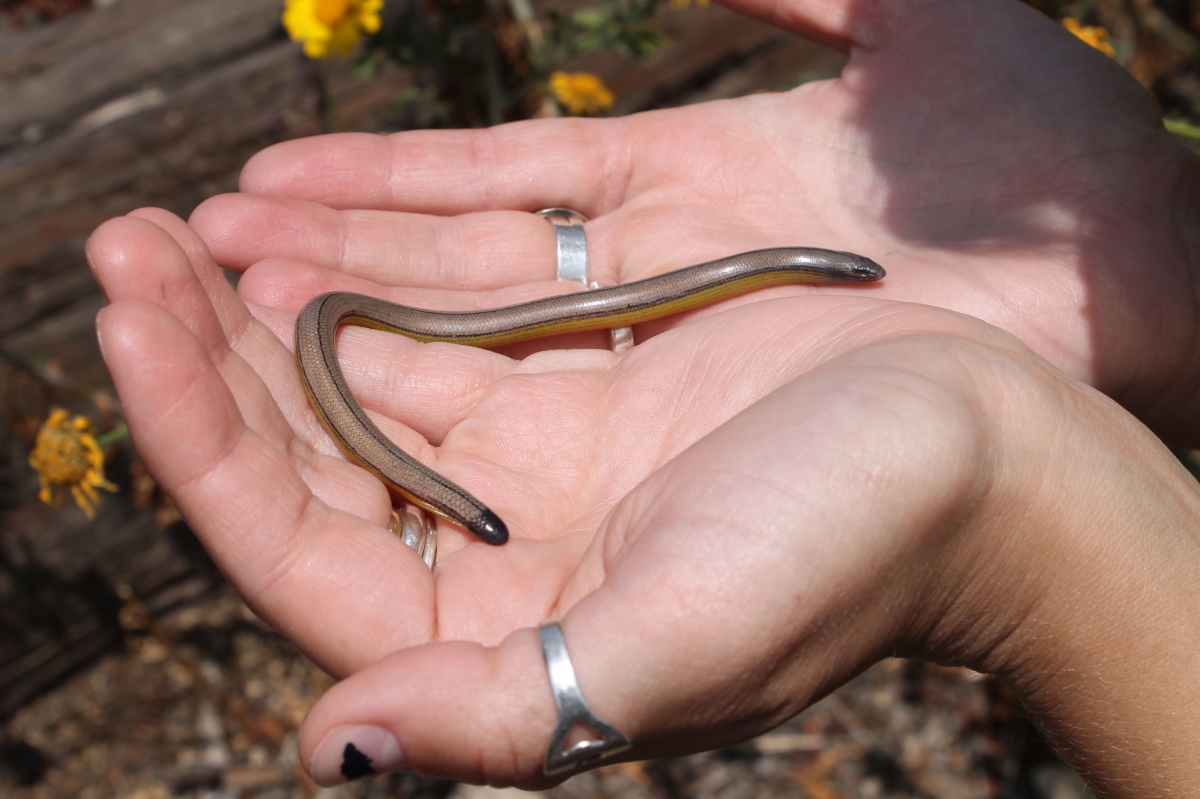
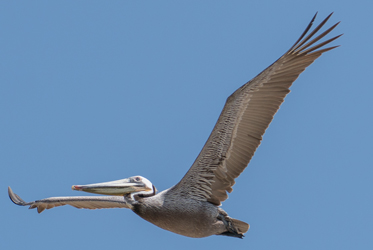

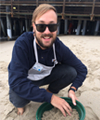 Taylor Spesak is the Aquarium’s public programs educator. Join him every Wednesday at 3pm for sand crab monitoring. The program is included with
Taylor Spesak is the Aquarium’s public programs educator. Join him every Wednesday at 3pm for sand crab monitoring. The program is included with 